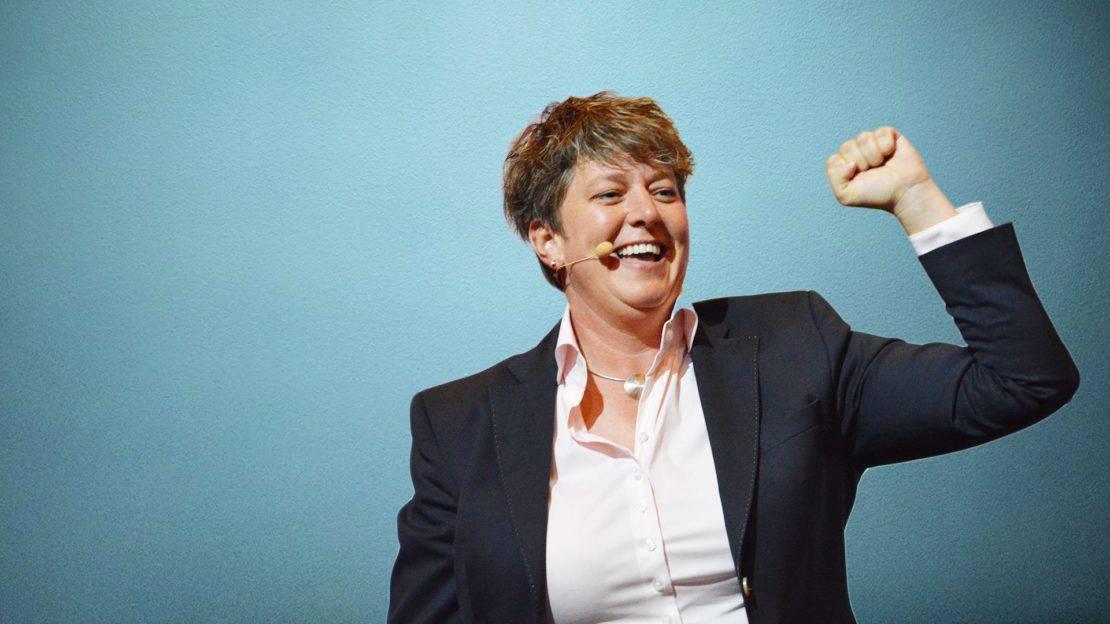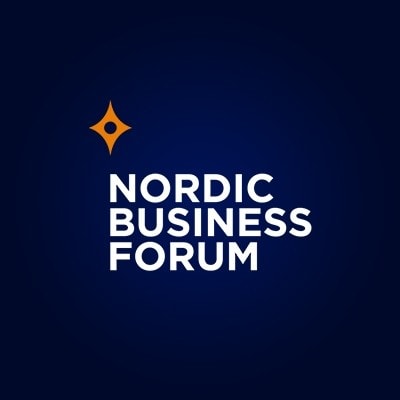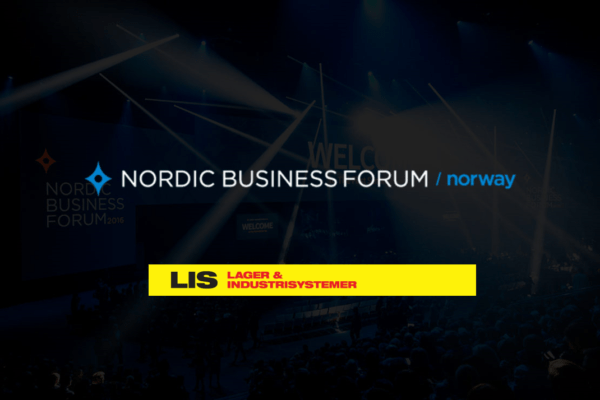22Dec2017
To continue our NBFSweden 2018 Speaker Spotlight series, we warmly welcome Cheri Tree!
Cheri Tree is a best-selling author, professional keynote speaker, executive business coach, world-renowned sales trainer, and entrepreneur. She is the Founder and CEO of BANKCODE, with clients in more than 40 countries worldwide. Cheri has spoken to hundreds of thousands of entrepreneurs and sales professionals globally. She has been featured in numerous international publications and shared the stage with icons such as Tony Robbins, Robert Kiyosaki, Suze Orman, Les Brown, and Sir Richard Branson. Cheri has also lectured at Harvard University and UC Berkeley, and she is considered the number one personality sales trainer in the world. We sat down with Cheri to discuss her upcoming appearance at NBFSweden 2018.
Nordic Business Forum: Hi Cheri, it’s great to speak to you. Let’s dive right in and start with Nordic Business Forum Sweden. You’ll be speaking on the topic of “Buyology” — what does that mean exactly?
Cheri Tree: Great to speak to you too, and yes, buyology comes from a methodology I just wrote about. In my book, Why They Buy, I look at how companies are spending thousands of hours and millions of dollars trying to teach their people how to sell instead of focusing on answering the only question that, in my opinion, impacts the company’s bottom line, which is: why do they buy? In other words, what triggers the yes versus the no in the sales process? So, buyology is the science of buying behavior. I was fascinated with what triggers the yes in the sales process. To figure that out, I used personality science. But where most personality assessment tools help you understand more about who you are, my assessment tool that I call B.A.N.K. was designed to tell me more about who the customer is and why they buy. And thus, it’s not based on psychology. It’s based on buyology because I didn’t care about whether or not the customer was an introvert or an extrovert. What I cared about is what triggers the yes versus the no, and that’s what I call buyology.
NBF: Great! Tell us more about this assessment tool, B.A.N.K. How did you develop it?
CT: Well, it started with my journey to figure out how to get more yes’s and that’s what lead me to personality science and using personality profiling instruments, but none of those existing assessments ever taught me about the buying behavior of the customer. They always told me about the psychological profile of myself. What I did was reverse-engineer the idea of personality science, and instead of it being about me, it was about the customer and why they buy.
Ultimately I called it B.A.N.K. That was my interpretation of the four personality types. The B represents blueprints, the A represents action, the N represents nurturing, and the K represents knowledge. Each one of these four personality types make buying decisions for completely different reasons, for the same exact product. And this is what a company needs to understand.
You might be marketing one product to multiple groups of people. Let’s say, Volvo is selling cars, but each customer would buy that same car for completely different reasons. But what are these reasons? That’s what I wanted to figure out. If I could identify the buying profile of the customer, link it to a personality assessment that I invented, then could I figure out the formula of what to say to that buyer to trigger the yes (and avoid the no)! That’s what B.A.N.K. has become.
NBF: Fantastic. It sounds like a fascinating assessment tool, and it’s something that you have been able to develop over time and strengthen. As the CEO of BANKCODE, how do you identify with the theme of NBFSweden 2018, Lead Lean?
CT: Leading Lean has to be the core principle of any startup business because you don’t want to bring on a lot of debt, and you don’t necessarily want to sell a lot of equity in raising capital for your company. One of the things that our company has done is that we’re 100% funded from the sales of our products into the market. In other words, no debt, no investment capital. Funded purely on growth. What we had to do to lead Lean was, we had to be far more efficient in sales and marketing and conversions so that we just delivered a better message into the marketplace. What happened when we did this? We were able to hit our target market faster. We could shorten the sales cycle and shave off time (which is money). We could require fewer people on the team because our conversion rates were higher. We did a better job with customer service job we knew the buying style of the customer, and, therefore, we had less support ticket issues to manage on the inside.
Every piece of our business, from marketing, advertising, selling conversion, customer service, internal leadership management, and more all got much leaner by being able to speak the code (i.e. language) of the person that we’re selling to. And that allowed us to lead Lean.
NBF: Amazing – have your clients also followed this Lean working structure, or have you been met with resistance to Lean practices?
CT: Well, so, Lean is focused on three key steps: build, measure, and learn. And our clients, they usually see Lean as meaning cuts — and they want to cut costs, they want to cut wasted marketing dollars by not segmenting the market. They want to cut timeframes to get yes’s, to get client acquisitions, sales conversion. But there are certain things that you absolutely want to increase. You want to increase the speed of getting a yes, you want to increase your sales velocity, you want to increase revenues. Lean does not mean cutting everything, but thta’s not always understood. Lean means: how do we get more efficient, more effective, at what we do? So, from our side, I’m thinking, what if we could show them a way that they could increase their efficiency and effectiveness to become 300% faster? So yes, there can be resistance, but we’re here to help people see the opportunity and potential instead of the obstacles.
Perfect example: I worked in corporate America and I wanted a pay increase. My reviews were hitting the top of the charts. Every top point that I could possibly get as an employee in a company, I was a rare find for a company. And yet, they paid me the standard increase, nothing special. And I said, “Guys. I want you to pay me more.” All I was asking for was a few thousand dollars more in my salary. That’s it. And they refused to pay me more. So, the question is, in leading Lean, what was the real cost of that decision?
I ended up resigning. They lost Cheri Tree from their company as an asset. Human capital’s one of the most important investments they could ever make. And every employee has a code. And to replace me, they spent close to $20,000, between the HR firm and the relocation expenses, to find my replacement. And then the learning curve to get that person up to speed on top of the 20 grand, the company went back milestones just simply because they refused to give me a few more thousand dollars. That is not leading Lean. That’s being stupid.
Human capital is one of those things, and understanding the B.A.N.K. codes is crucial for quick success. The most innovative companies that are our clients are putting B.A.N.K. codes up on every single plaque of the employees in their cubicles, or in their offices. In the telephone system, in the email programs, in name tags, on business cards, you will find their individual B.A.N.K. codes. If you can understand how to effectively communicate, you can save expenses. If you can understand how to negotiate, you can save expenses. If you can learn how to close the sale, you can drive a lot more revenue and save expenses. Therefore, this is the epitome of leading Lean, in my opinion.
NBF: Absolutely, and that’s a very clear example. Thank you. Last question: if people reading this interview learn only one thing from you, what should it be?
CT: The one thing to understand is that there is a difference between how to sell versus why they buy, and if you can crack the personality code that tells you the second one, it will make the first a lot easier. You can take it to the B.A.N.K. — and take it to the B.A.N.K. in few different ways. My job is to make people rich. Rich in income, relationships, and quality of life. And if you understand the B.A.N.K. codes, it impacts far more than the bottom line. It impacts the very core of every relationship and all the communication that we have with another human being. This is where B.A.N.K. gets real and raw for a lot of people. We have people who go through our training program to learn how to make more money, and they walk away saying, “This system just saved my marriage,” and “You just made me a better parent.”
So, this has far more meaning and impact than you can imagine because it’s the core DNA of each human interaction. The message that I want people to understand is that, if they can learn how to communicate differently based on these different styles, they can make all the money they want, and improve the quality of their life beyond anything they could imagine.
We’re excited to learn more from Cheri Tree at NBFSweden 2018! If you’d like to hear her and other leaders discuss this year’s theme of lean leadership, be sure to grab your ticket or Live Stream license today. Follow us on Facebook and Twitter and #NBFSweden to keep up with our speaker announcements as we get closer to the event!

 by:
by: 
